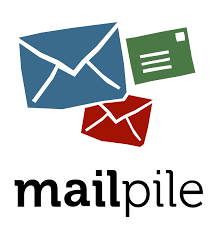Mailpile — Local Email Client with Built-In Encryption
General Information
Mailpile is an open-source project that tries to make encrypted email usable without plugins or external tools. It runs as a local web app: install it, launch, and a browser window becomes your mail client. Under the hood it’s built with Python, with GnuPG baked in for end-to-end encryption.
The project kicked off through crowdfunding around 2013 and attracted attention from privacy advocates. While it never aimed to replace Gmail or Outlook in features, it carved out a niche for people who want to manage mail locally and keep encryption simple.
How It Works
Mailpile doesn’t host mail on its own — it connects to existing accounts over IMAP/SMTP. Once messages are downloaded, they’re stored locally in an encrypted index. The web-based UI is then used for search, reading, and composing.
Encryption is central: GnuPG keys are generated and managed inside the app, and sending an encrypted mail is as simple as ticking a box. Because it runs locally, the server never sees decrypted mail; the browser interface just talks to the local daemon.
Functions
Feature | What it looks like in practice
—|—
Mail protocols | IMAP/SMTP, connects to existing accounts
Local storage | Mail and indexes stored locally, user controls the data
Encryption | Built-in GnuPG, end-to-end by default
Search | Fast local index, keyword and tag-based filtering
Web UI | Runs in the browser, feels like a modern mail client
Platforms | Linux, macOS, Windows (with some manual setup)
Licensing | Open source (AGPL)
Installation Guide
1. Install dependencies (Python, GnuPG) on Linux or macOS.
2. Download Mailpile from the official Git repository or packages.
3. Run mailpile to start the local server.
4. Open the browser at http://localhost:33411.
5. Add IMAP/SMTP accounts, generate or import GPG keys.
For Windows, unofficial builds exist but may require extra tweaking.
Everyday Use
– Privacy enthusiasts use Mailpile as their daily client, keeping mail local and encrypted.
– Journalists and NGOs adopt it to communicate securely with sensitive sources.
– Developers use it as a playground for experimenting with open mail and crypto standards.
For users, it’s just a webmail interface, but one running on their own machine with encryption baked in.
Limitations
Mailpile is still under active development and lacks polish compared to Thunderbird or Outlook. Some features feel experimental, and large mailboxes can cause performance issues. It doesn’t try to be a full collaboration suite — no calendars or contacts sync out of the box.
Comparison
Tool | Platforms | Strengths | Typical Fit
—|—|—|—
Mailpile | Linux, macOS | Local mail + built-in encryption | Privacy users, NGOs, activists
Thunderbird | Multi-platform | Mature, extensible, no built-in GPG | General users, Linux admins
Outlook | Windows/macOS | Deep Microsoft ecosystem | Corporates, Exchange users
ProtonMail | SaaS | Encrypted webmail, hosted solution | Users wanting zero setup
Notes from the Field
Admins and users who tried Mailpile often call it “promising but quirky.” It’s not as polished as big-name clients, but for people who care about encryption, it removes barriers. The common advice: keep mailboxes reasonably sized and treat it as a secure personal client, not a corporate platform.

